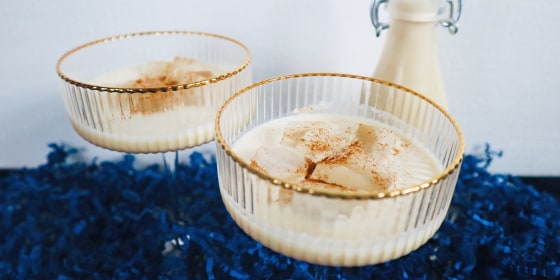This year, my parents announced that they weren’t putting up a Christmas tree. We’re having our annual dinner at my brother’s house in the rolling hills of Maryland, so my dad thinks the artificial tree that they’ve had since the early ‘90s was an unneeded hassle to set up.
I protested by buying them a small live potted spruce. I thought, this way, my 41st Christmas technically goes as it always has.
“You’ve got to have a Christmas tree!” I exclaimed, decorating the mini tree with fairy lights and tiny partridges, as my parents zoned out watching TV.
They’re in their 80s now, moving slowly, with more intention, and eliminating what they deem to be frivolous. I, on the other hand, have been zipping to and fro, decking the halls and holding familiar holiday habits close to the heart.
As my parents age, the responsibility of carrying on Lamour family Christmases is falling more to me and my siblings. We’re baking the honey-glazed ham, trimming the tree and hosting our post-midnight-mass gifts exchange over cups of homemade cremas, a Haitian drink my family enjoys on special occasions. It’s not Christmas without it.
What is cremas?
Cremas, also spelled kremas or crémasse, is a thick, creamy, rum-based drink made with coconut, condensed and evaporated milks, cinnamon, nutmeg and star anise.
While sugarcane-based rums like Rhum Barbancourt is a popular option for cremas, some practitioners of the beverage use grain alcohol, overproof Jamaican rums or clairin, a distilled alcoholic spirit made from Haitian sugarcane.
Where did cremas come from?
“You know, it’s funny. It is an alcoholic beverage, but is not really considered an alcoholic beverage back home,” chef Alain Lemaire tells me. Lemaire grew up in Port-au-Prince, Haiti, but now lives in South Florida, where he is co-owner and executive chef of catering company Sensory Delights, as well as owner and operator of private chef service Ou Manje Deja.
It’s hard to pinpoint exactly where cremas came from, but its components are unmistakably Haitian. Cinnamon, nutmeg and star anise season many Haitian recipes, while coconut and condensed milk are main components in many Haitian desserts.
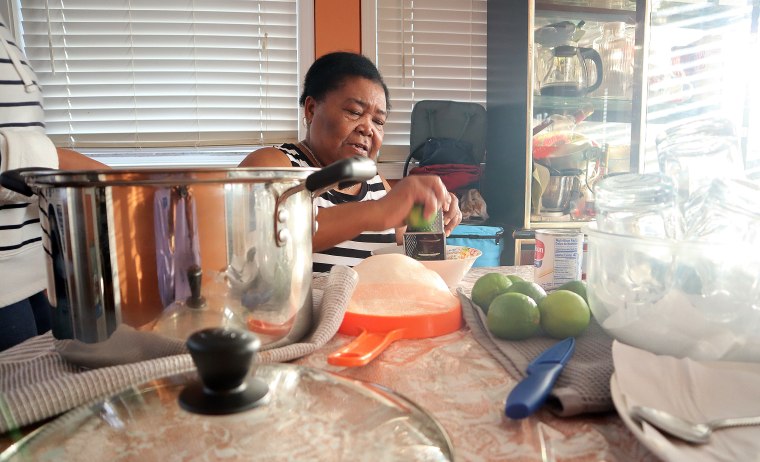
Lemaire posits that migration has something to do with cremas, since so many Caribbean cultures have their own version of the drink: Puerto Rico has coquito, Jamaica has rum cream, Panama has ron ponche and Cuba has crema de vie.
While he doesn’t remember learning about the origin of cremas, he’s seen it served at weddings, baptisms and holidays for as long as he can remember. The same goes for my father, who says his earliest memory of it is watching his own parents take sips over ice in the late 1960s.
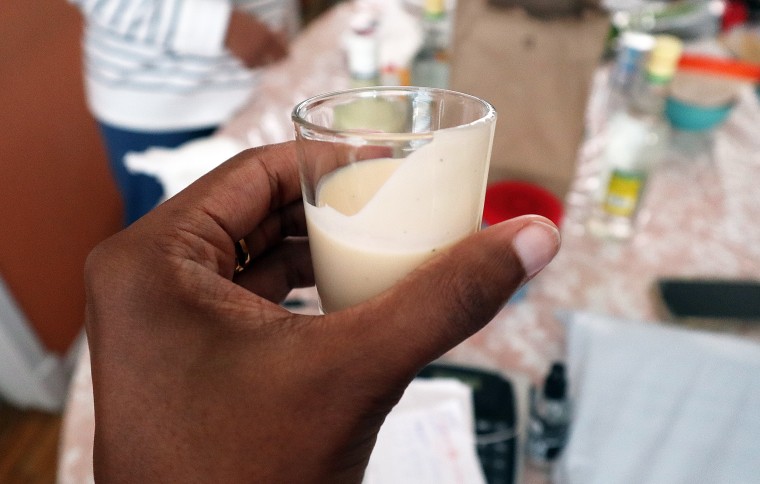
“I feel like, to learn the true history of cremas, you have to be in the trenches in Haiti, asking the right people the right questions,” Charlene Absalon, owner of Cremas Absalon, tells me.
One theory as to why clairin is a popular spirit to use in cremas has to do with Haiti’s independence. Clairin is made from local sugar cane juice, which is yeast-fermented and distilled using techniques from centuries ago.
After the revolution, Europeans couldn’t strong-arm traditional methods and eliminate them from history like they did on other islands.
Additionally, during slavery, rum was used as a weapon of subservience and as currency to buy enslaved people, which could be why some Haitian recipes have avoided using it in favor of clairin since. Stateside, clairin is difficult to find in your local liquor store, but not impossible.
Regional differences
“I just remember it as a very popular drink,” Fabya Lauture, my cousin, a Maryland resident who makes and sells small batches of cremas around the holidays, tells me.
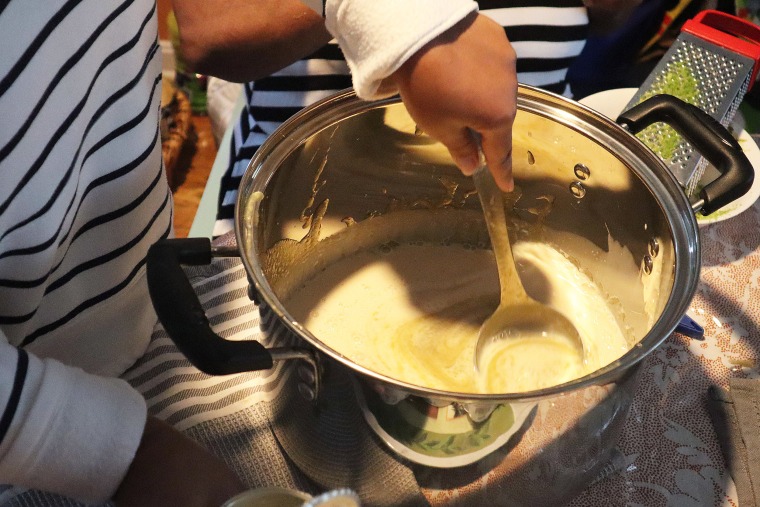
She tells me that when her family used to live in Petion-Ville, Haiti, her mom would make batches of cremas to sell in her dad’s convenience store — and would give the kids “a little taste on Christmas Eve or New Year’s Eve,” she says.
My aunt Cleonne taught her how to make it, and they prefer to use overproof rum in their batches.
Visiting with my cousins over the weekend, I sampled the drink as they bottled it. The scent of boiling ginger permeated the air — an unusual ingredient for cremas. Lauture says they add fresh ginger syrup to their batches to make the concoction “spicier.”
There’s a lot of wiggle room with cremas: Some versions include steeped whole spices and grated powders; others use grated fresh coconut or canned coconut milk or cream.
There are versions of cremas that add pineapple, guava and cherry to the mix. Some cremas-makers, like me, opt to add a little almond extract, while others forgo it in favor of a more classic taste.
Absalon — who uses rum in her cremas — also produces flavors that riff on the traditional recipe, including chocolate almond, coffee and pumpkin spice. She’s also known for making cremas ice cream and coffee creamer, which were met with pushback when she first sold them.
“One of the problems Haitians have is that they don’t like change,” Absalon says, which is why our cultural recipes have remained largely the same for so long. “Why can’t we push the envelope as Haitians?”
Keeping our traditions alive
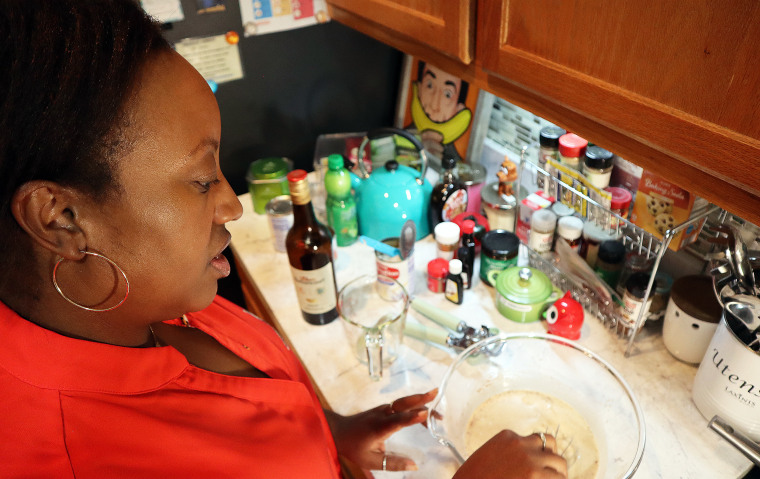
I was over at my sister’s this week to make this year’s cremas batch. It’s our tradition to have a sip at Christmas and to have another on New Year’s Eve, along with some joumou, the soup of Haitian independence.
We reminisced about the first time we ever tried the drink.
“I think I was 22,” my sister, Loree Lamour, tells me, adding that she thought it tasted like an adult vanilla-coconut milkshake. It tastes like Christmas to me: warm, spicy and cozy.
My sister is nine years older than me, so she remembers more clearly when my mom, aunt Ismela and grandmother Adrienne used to make cremas. They’ve since stopped, so my sister took over the tradition three years ago.
“It’s a nice way to wish family happy holidays and that you are thinking of them when we don’t see each other as often as we’d like to,” she says.
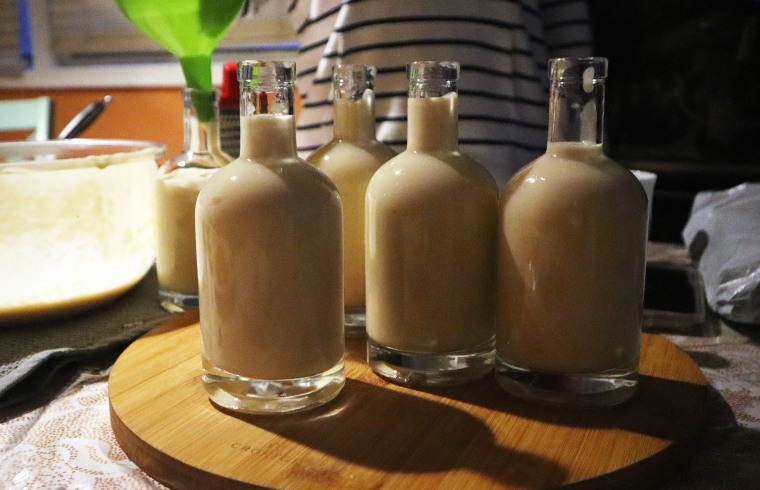
Absalon thinks this should be a year-round tradition.
“I don’t believe it should be just for holidays,” she says. “Just like with soup joumou, there are people who still make it all year at any time.”
But making it this time of year is how my sister and I connect to our family’s history.
Loree says cremas reminds her of our late grandmother, Ceyenne, who helped raise us and would cook for us all the time.
“The mere smell of the food she used to make and cremas brings back happy memories of her and relatives we’ve lost,” she says. “Keeping the tradition keeps us close as a family.”
